Abstract
Experiments were designed to discriminate between inhibition of growth due to contacts or exhaustion of serum factors. The cell layer was wounded and the migrating cells were followed by time-lapse cinematography; DNA synthesis in the same cells was recognized by means of 3H-thymidine labeling and radioautography. In this way, the complete history of individual cells migrating to the wound could be described. The results show that topographical relationships between cells play an important role in controlling initiation of DNA synthesis. It is still unclear whether initiation is promoted by release from contacts or by the increased ability of the cells to utilize serum factors because of their changes in shapes and activities.
Full text
PDF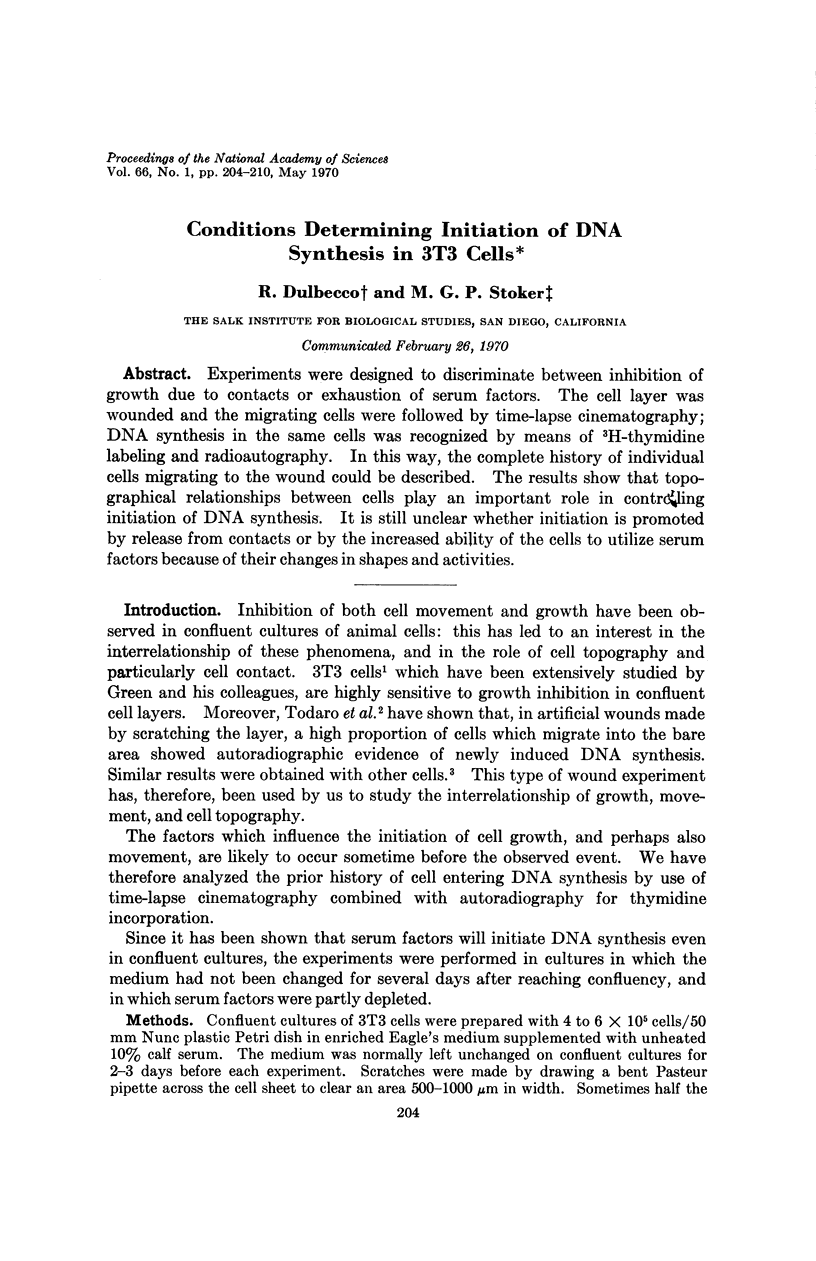
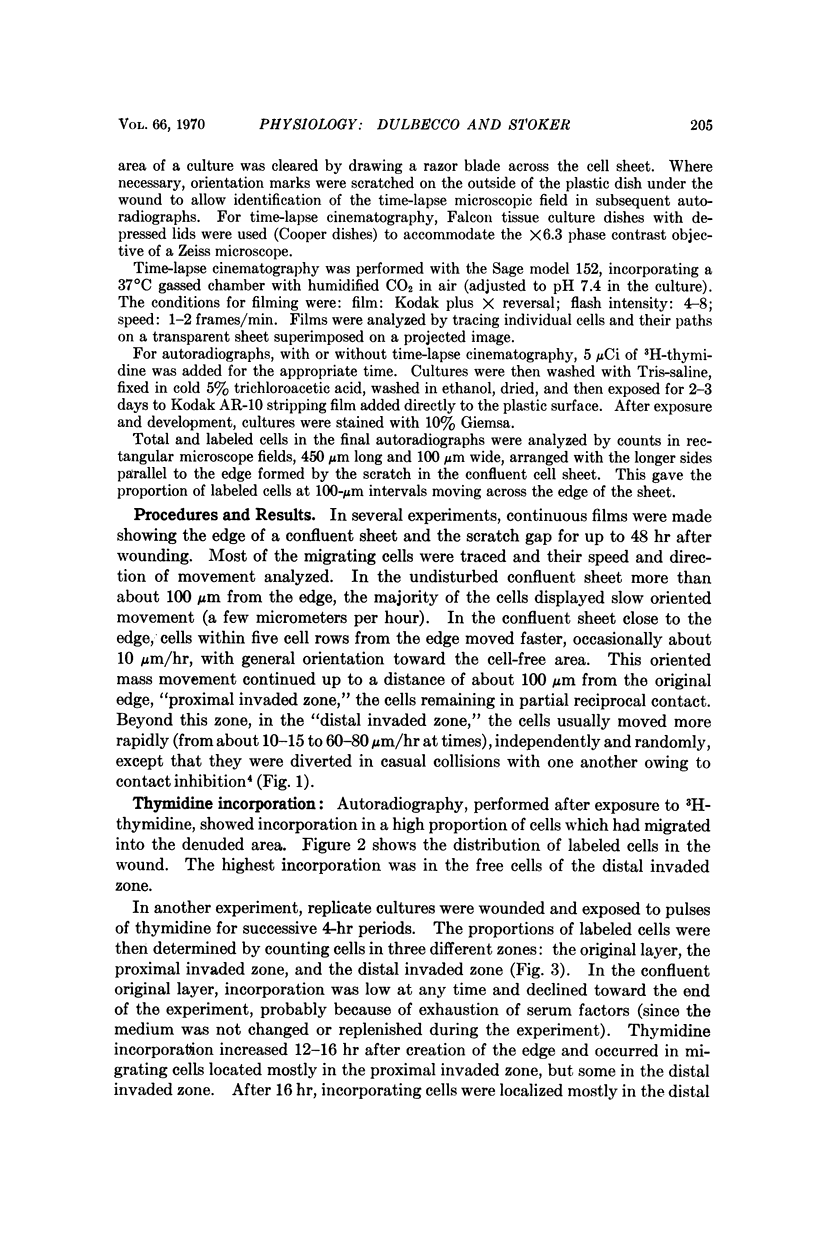
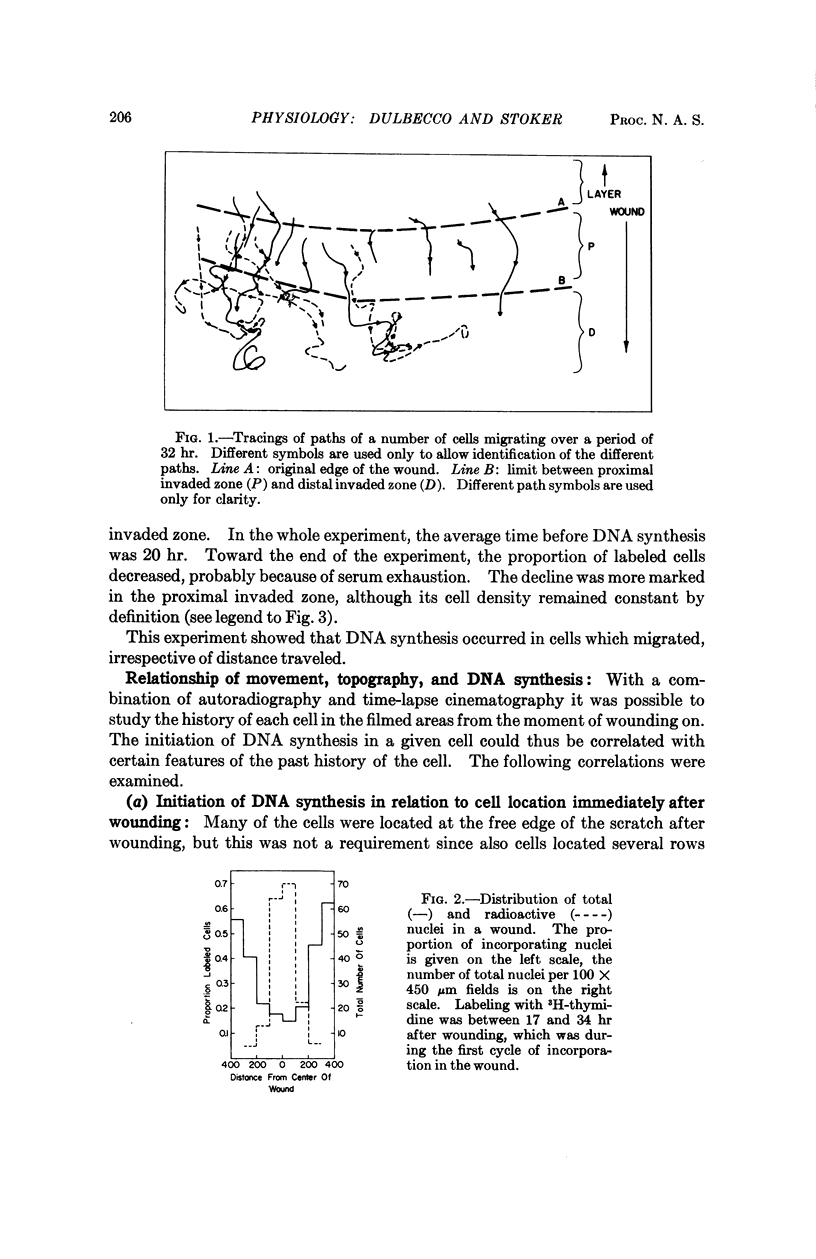
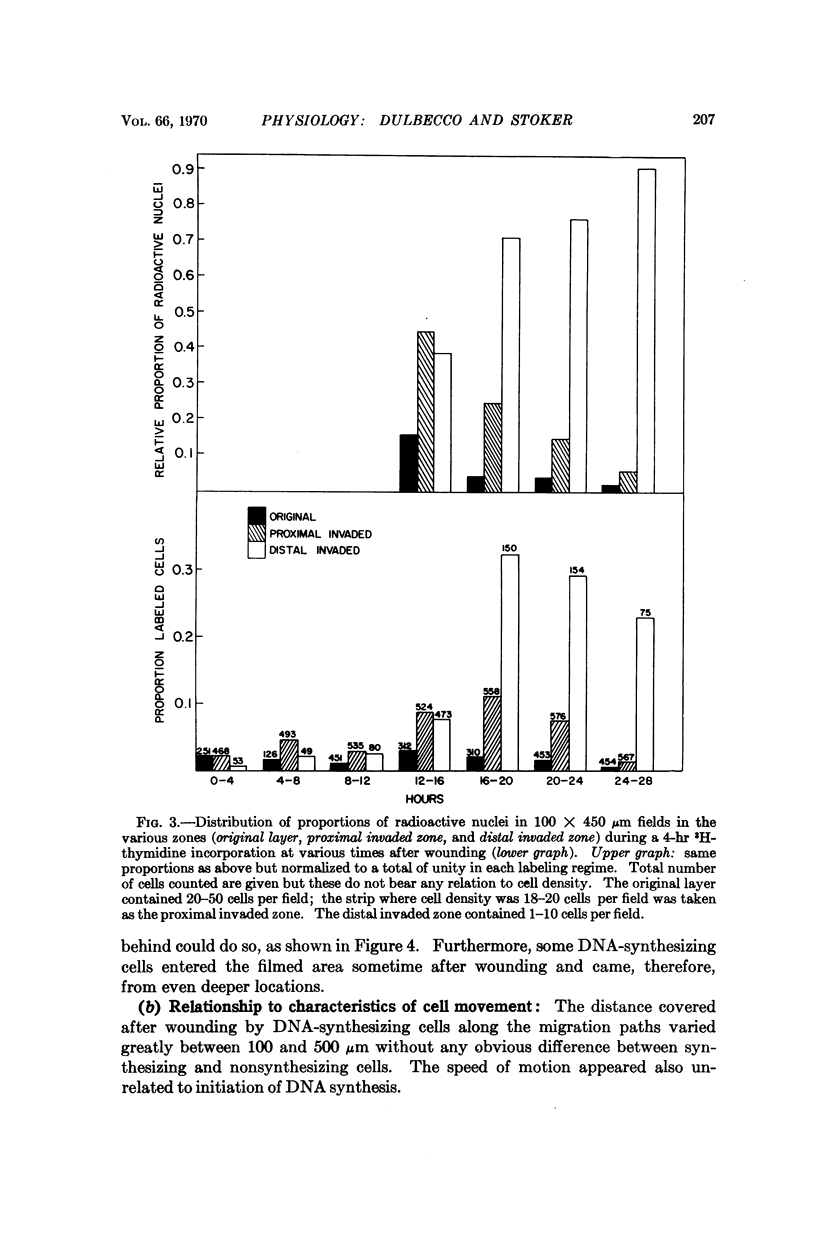
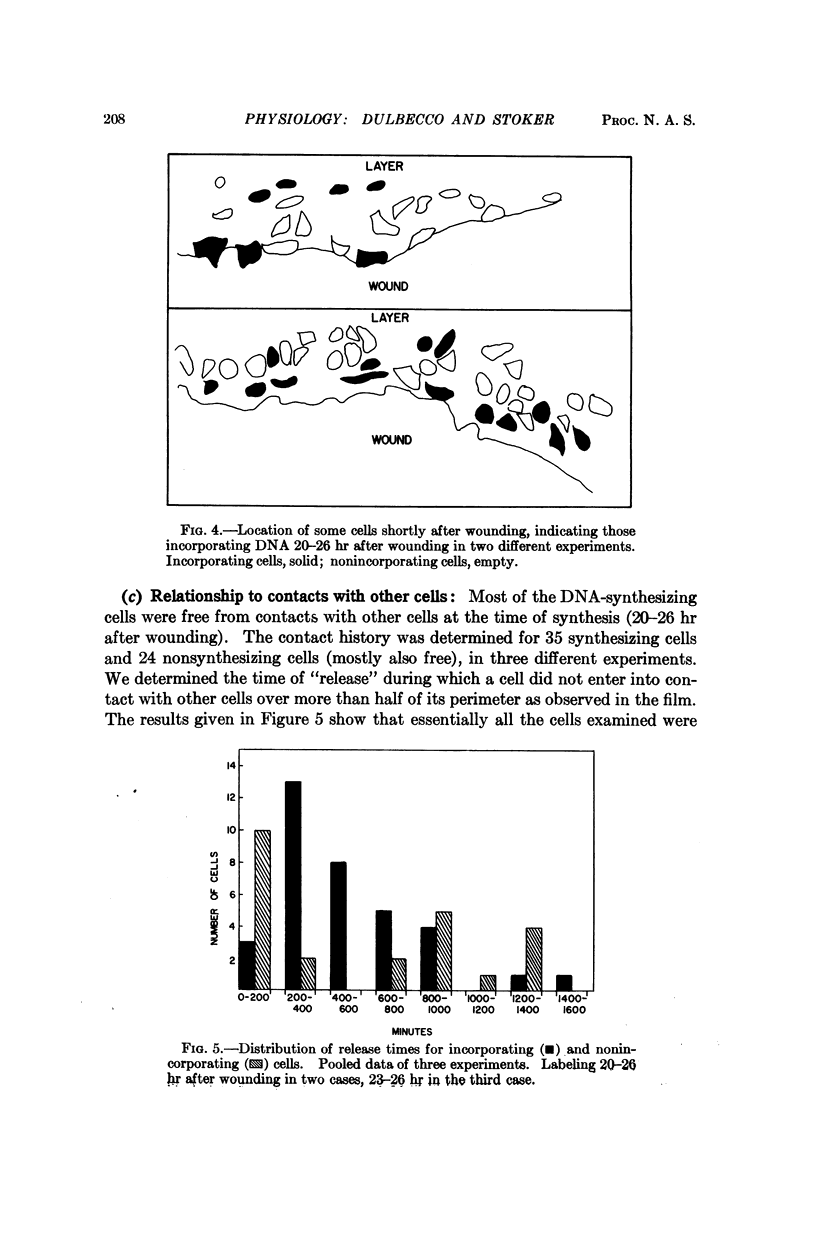
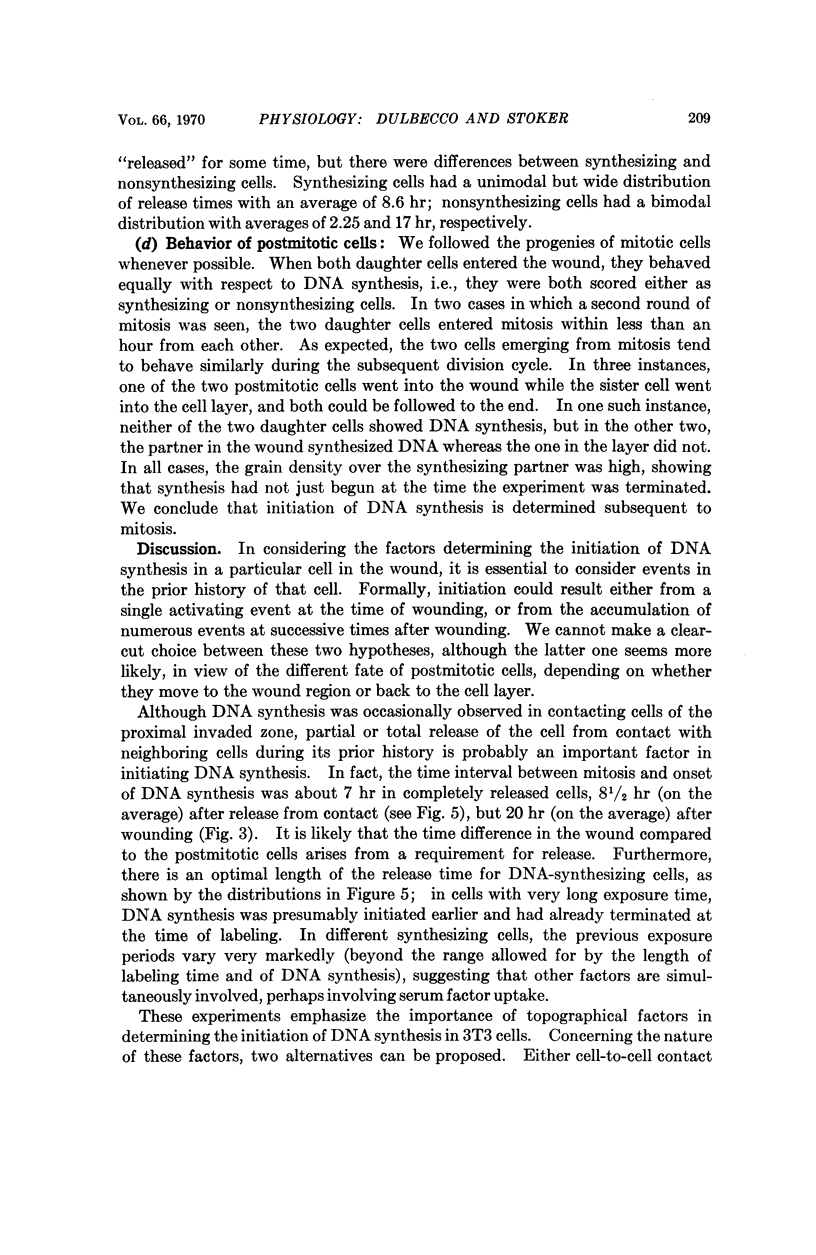
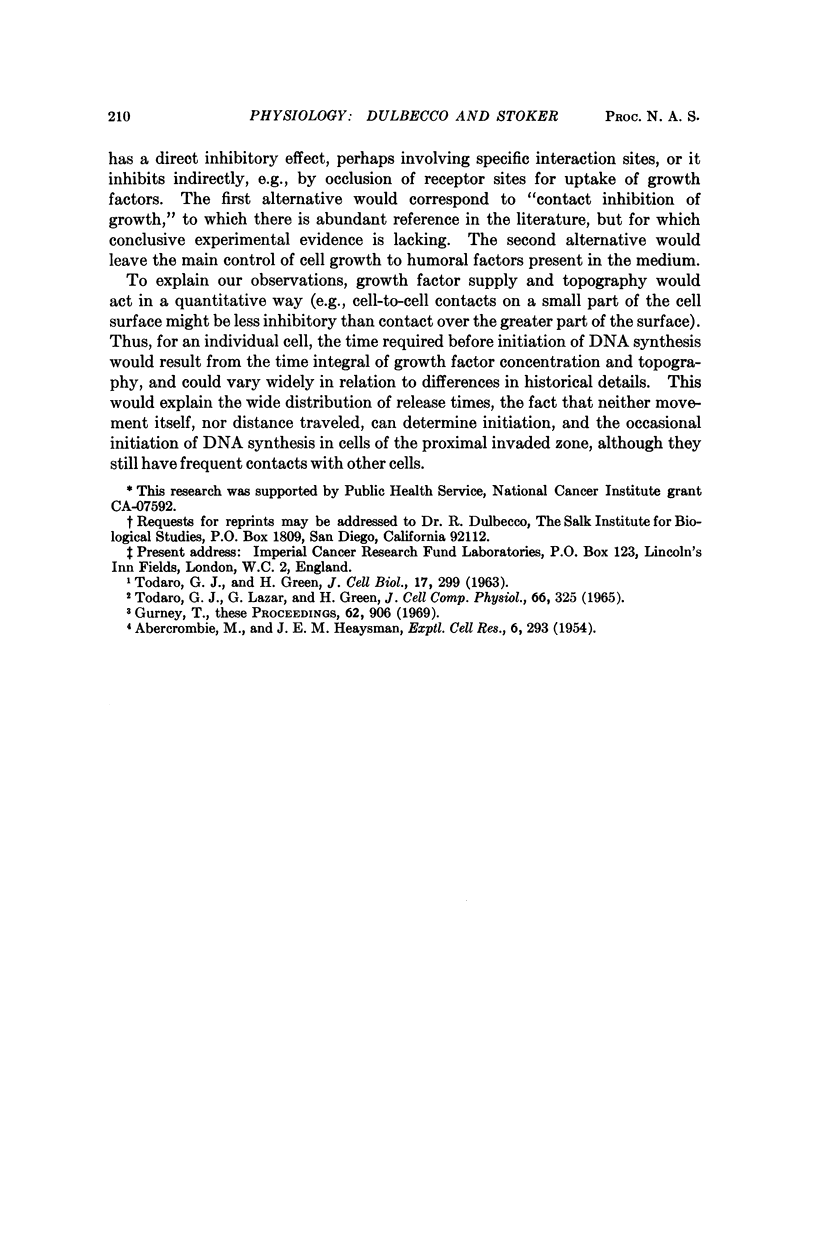
Selected References
These references are in PubMed. This may not be the complete list of references from this article.
- ABERCROMBIE M., HEAYSMAN J. E. Observations on the social behaviour of cells in tissue culture. II. Monolayering of fibroblasts. Exp Cell Res. 1954 May;6(2):293–306. doi: 10.1016/0014-4827(54)90176-7. [DOI] [PubMed] [Google Scholar]
- Gurney T., Jr Local stimulation of growth in primary cultures of chick embryo fibroblasts. Proc Natl Acad Sci U S A. 1969 Mar;62(3):906–911. doi: 10.1073/pnas.62.3.906. [DOI] [PMC free article] [PubMed] [Google Scholar]
- TODARO G. J., GREEN H. Quantitative studies of the growth of mouse embryo cells in culture and their development into established lines. J Cell Biol. 1963 May;17:299–313. doi: 10.1083/jcb.17.2.299. [DOI] [PMC free article] [PubMed] [Google Scholar]
- Todaro G. J., Lazar G. K., Green H. The initiation of cell division in a contact-inhibited mammalian cell line. J Cell Physiol. 1965 Dec;66(3):325–333. doi: 10.1002/jcp.1030660310. [DOI] [PubMed] [Google Scholar]


